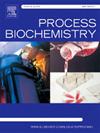全面分析用于治疗癌症的光热疗法 (PTT) 和光动力疗法 (PDT)
IF 3.7
3区 生物学
Q2 BIOCHEMISTRY & MOLECULAR BIOLOGY
引用次数: 0
摘要
光热疗法和光动力疗法利用光,通过升高温度或产生活性氧来靶向消除癌细胞。为了了解这两种疗法的主要作用,目前正在进行细胞层面的研究。根据最近的研究,基于不同的作用模式,光动力疗法和光热疗法可以协同发挥作用。由于这两种疗法都是无毒的,因此这两种疗法的结合可能会更有效地治疗癌症。此外,这两种疗法的结合正被用于开发同时含有光热和光动力活性药物的纳米平台。在这篇综述中,我们讨论了两种疗法的基本机制和不同的机制,如细胞死亡机制、血管损伤、细胞外基质效应和免疫效应。此外,我们还讨论了可能影响光动力疗法和光热疗法的不同因素。此外,我们还讨论了可用于光动力疗法和光热疗法的不同类型的纳米材料。本文章由计算机程序翻译,如有差异,请以英文原文为准。
A comprehensive analysis of photothermal therapy (PTT) and photodynamic therapy (PDT) for the treatment of cancer
Photothermal and photodynamic therapies use light to target and eliminate cancer cells by raising the temperature or producing reactive oxygen species. To understand the main effect of both the therapy, studies are going on at the cellular level. Based on the distinct mode of action both photodynamic and photothermal therapy may work synergically according to recent studies. As both therapies are non-toxic, the combination of these two may be more effective for curing cancer. Additionally, a combination of the two therapies is being used to develop nano-platforms that incorporate simultaneously photothermally and photodynamically active drugs. In this review, we have discussed the basic mechanism of both the therapy and different mechanisms such as cell death mechanism, vascular damage, extracellular matrix effect as well as immune effect. Along with that, we have also discussed different factors that can affect photodynamic and photothermal therapy. Additionally, we have also discussed the different types of nanomaterials that can be useful for photodynamic therapy as well as in photothermal therapy.
求助全文
通过发布文献求助,成功后即可免费获取论文全文。
去求助
来源期刊

Process Biochemistry
生物-工程:化工
CiteScore
8.30
自引率
4.50%
发文量
374
审稿时长
53 days
期刊介绍:
Process Biochemistry is an application-orientated research journal devoted to reporting advances with originality and novelty, in the science and technology of the processes involving bioactive molecules and living organisms. These processes concern the production of useful metabolites or materials, or the removal of toxic compounds using tools and methods of current biology and engineering. Its main areas of interest include novel bioprocesses and enabling technologies (such as nanobiotechnology, tissue engineering, directed evolution, metabolic engineering, systems biology, and synthetic biology) applicable in food (nutraceutical), healthcare (medical, pharmaceutical, cosmetic), energy (biofuels), environmental, and biorefinery industries and their underlying biological and engineering principles.
 求助内容:
求助内容: 应助结果提醒方式:
应助结果提醒方式:


